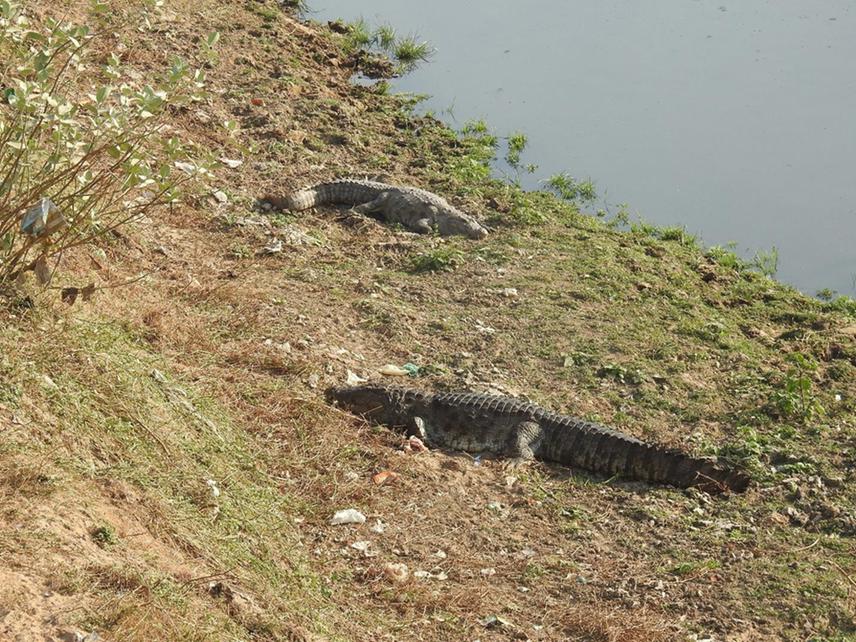Brinky Desai
Mugger crocodile is one of the widely spread crocodilian species in India. While the species went extinct in Bhutan and Myanmar, India holds a fairly large population of muggers distributed over 50 different locations in small and isolated pockets. They are found in a range of different habitats, including hill streams, large rivers, and in urban drainages. Muggers are legally protected under Schedule I in the Indian Wildlife (Protection) Act 1972 and categorized as ‘Vulnerable’ as per IUCN. Mugger crocodiles regularly get into conflict with humans in the Vadodara district of central Gujarat, India, and most parts of Vadodara have become an unsustainable habitat for both the muggers and the humans. Vadodara has high HMC incidences with 80 attacks recorded during 2010-2019.

The image taken during the basking study shows the basking of muggers, a typical behavior exhibited by cold-blooded animals, in one of the sites of the Vadodara region.
However, areas adjoining to Vadodara, for example, Charotar shows a stark contrast and had only three HMC incidences (2010-2019). The project aims at understanding the impact of human-mugger conflict (HMC) on the stress physiology of mugger crocodiles within a human-dominated landscape of Vadodara district of central Gujarat, India. To date, no physiological work has been done to understand the impact of anthropogenic disturbances on stress physiology of mugger crocodiles. As a part of my Ph.D. work under the guidance of my supervisor Dr. Ratna Ghosal, I intend to develop a non-invasive method to measure fecal glucocorticoid metabolite (fGCM) concentrations in free-ranging population of muggers within the Vadodara district. Generated hormone profiles will help in understanding the impact of anthropogenic disturbances on the wellbeing of the species.